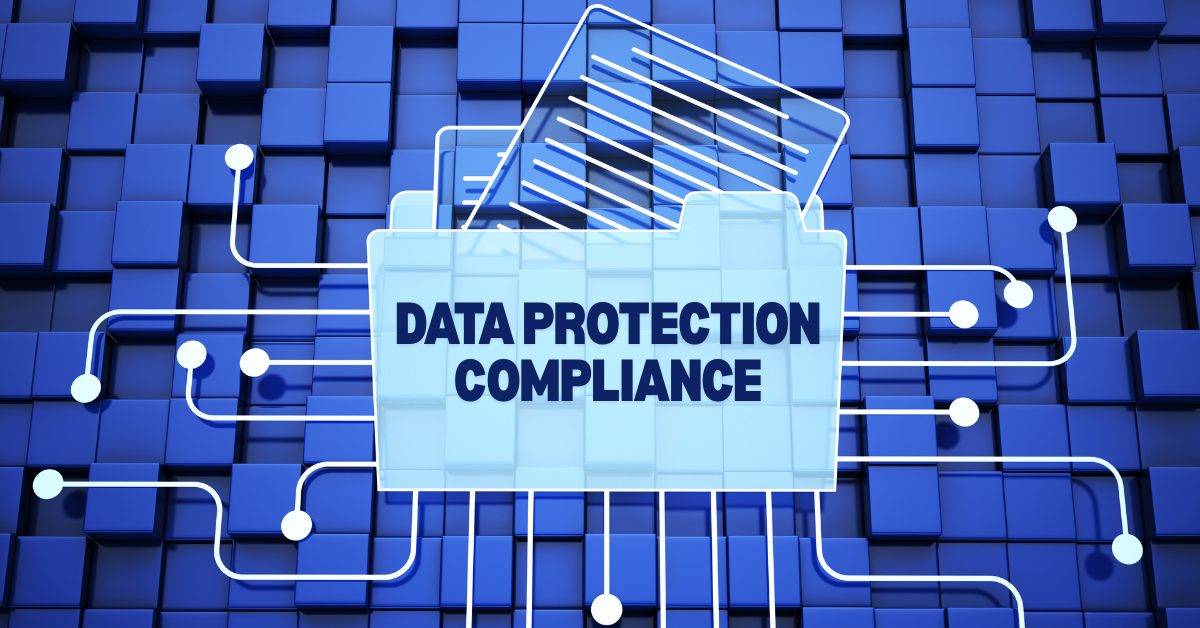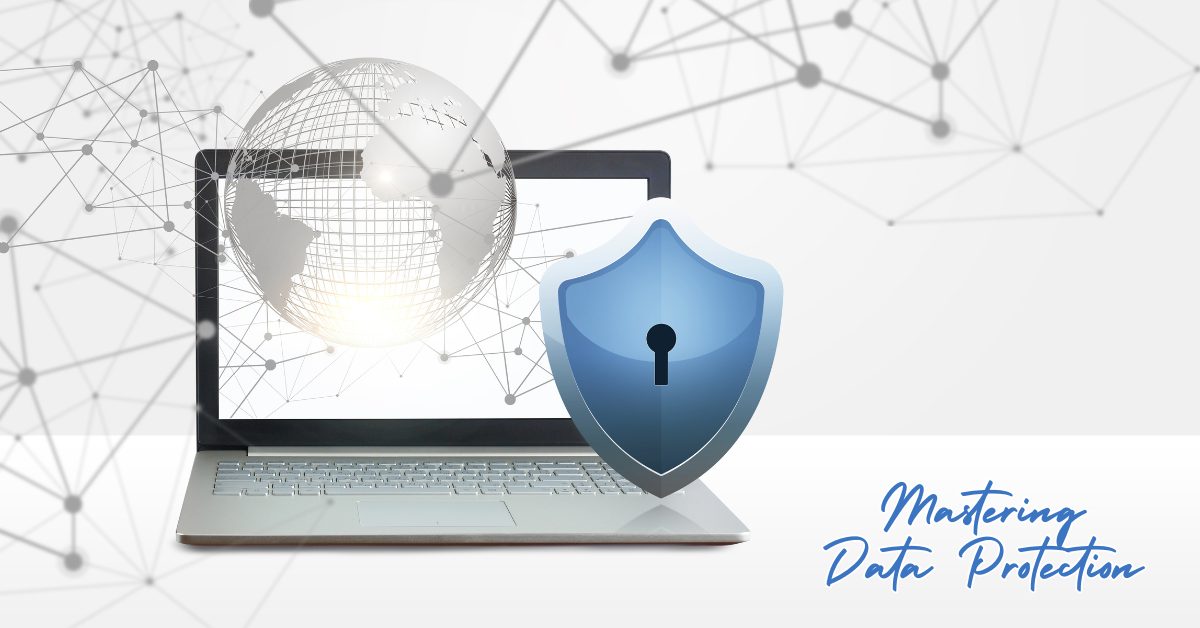Why Every Business Needs Data Loss Prevention
Data loss prevention is no longer just a concern for large corporations—it affects businesses of all sizes, especially small and medium-sized enterprises. Protecting sensitive client data is not only a matter of trust but also a legal and regulatory requirement. When data is lost, stolen, or mismanaged, the financial, reputational, and legal consequences can be devastating.
At Gallop Technology Group, we understand how overwhelming data security and data protection compliance can be for business owners. That’s why we provide a Free Domain Security Check Up to help uncover vulnerabilities and offer tailored cybersecurity solutions that safeguard your operations.
In this article, we’ll look at seven critical gaps in data loss prevention that often cause businesses to fall short in compliance—and what can be done to address them.
Lack of Awareness and Understanding
Many businesses underestimate the importance of data protection. Some owners assume that because they are small, cybercriminals won’t target them. The reality is quite the opposite—smaller businesses are often seen as easier targets because they may lack advanced defenses.
When there is little awareness of the risks, companies may not implement even the most basic safeguards. This not only jeopardizes client data but also leads to data protection compliance issues when regulatory bodies conduct audits.
Think about it this way: if a business does not know the value of its client data, it’s less likely to protect it properly. A law firm storing confidential client records or a dental clinic handling patient health information may assume hackers aren’t interested. But to criminals, this type of data can be sold on the dark web for significant profit.
Practical Steps
- Educate staff at every level about the value of data security.
- Share examples of how data breaches have financially and legally harmed businesses in similar industries.
- Provide clear, non-technical guidelines for employees on how to handle sensitive information safely.
Insufficient Resources
Small businesses often operate with tight budgets and limited staff. This makes it tempting to postpone investments in cybersecurity tools or employee training. Unfortunately, attackers know this and actively exploit it.
When resources are lacking, businesses may ignore critical aspects of data loss prevention, leaving gaps that hackers or even employee mistakes can exploit.
For example, a small accounting firm may rely on outdated computers without encryption because upgrading feels too costly. Yet, if one of those devices is stolen or hacked, client financial records could be exposed, leading to heavy penalties and loss of trust.
Smart Approaches
- Prioritize affordable yet effective data protection tools designed for smaller businesses.
- Partner with trusted managed service providers (MSPs) who can deliver enterprise-level security at a fraction of the cost.
- Budget for security training as a long-term investment rather than a short-term expense.
Misplaced Trust in In-House IT
Business leaders sometimes assume their in-house IT team can handle everything related to cybersecurity. While internal teams are often skilled, expecting them to cover all aspects of data protection without specialized support is unrealistic.
A common misconception is that IT staff automatically specialize in data security—when in fact, many are focused on keeping systems running smoothly, not anticipating every new cyber threat. This misplaced trust can result in overlooked vulnerabilities or outdated protections.
Imagine an IT staff member at a small business who is juggling helpdesk tickets, fixing software bugs, and managing printers. Without the time or resources to monitor cyber threats, they may miss warning signs of phishing attempts or ransomware activity.
Recommended Actions
- Support in-house IT staff with external expertise, training, and resources.
- Regularly audit internal systems to identify and fix weaknesses.
- Encourage IT and management to collaborate on compliance goals.
Outsourcing Challenges
Outsourcing IT functions can be cost-effective, but it comes with risks if providers are not carefully vetted. Some managed service providers promise comprehensive protection but fail to keep up with evolving compliance requirements.
If a provider does not prioritize data protection compliance, the business remains liable for violations—even if the service provider is at fault.
For example, if an outsourced provider neglects to patch software vulnerabilities in time, and client data is stolen, regulators will hold the business—not just the provider—responsible for failing to safeguard sensitive information.
What Businesses Can Do
- Research and verify the track record of any MSP or vendor before hiring them.
- Ask direct questions about their compliance knowledge and certifications.
- Schedule regular reviews to ensure they are delivering what they promise.
Regulatory Compliance Complexity
Data protection laws can be complex, and requirements vary depending on industry and location. For example, healthcare organizations must comply with HIPAA, while legal firms face State Bar requirements. Even general data security laws such as GDPR (Europe) or CCPA (California) have far-reaching effects.
Without dedicated effort, it’s easy for businesses to overlook important details. Non-compliance can result in fines, lawsuits, and reputational damage.
Consider a local business that takes payments online but doesn’t properly secure credit card data. Not only could this trigger financial losses from fraud, but the company could face compliance violations under payment industry standards.
Ways to Simplify Compliance
- Assign responsibility for compliance to a specific individual or team.
- Stay updated on relevant laws and changes in regulations.
- Document all security processes to demonstrate compliance if audited.
Financial Constraints
One of the biggest barriers to stronger data security is cost. Many businesses view cybersecurity as an expense rather than an investment. Unfortunately, this mindset can lead to greater financial loss later when breaches occur.
The expenses of downtime, losing clients, or facing legal action far outweigh the upfront cost of preventative measures. According to industry reports, the average cost of a data breach in 2024 was over $4 million—a figure that can easily bankrupt a smaller business.
A retail shop in Arizona, for instance, may feel hesitant to spend $1,000 on stronger network security. Yet, if a breach exposes hundreds of customer credit cards, the cost of remediation, lost sales, and legal battles could be tens of thousands more.
Budget-Friendly Solutions
- Calculate the potential financial impact of a breach and use it to justify investment in better security.
- Emphasize the return on investment (ROI) of avoiding data breaches.
- Start with affordable yet effective measures, scaling up as the business grows.
Lack of Employee Training
Even with strong systems in place, employees often remain the weakest link in data loss prevention. Clicking on a phishing email, using weak passwords, or mishandling sensitive data can all expose the company to risk.
Without consistent training, employees may not understand how their actions affect compliance and data security. A single careless click on a malicious email could compromise an entire network.
One real-world example: a law office employee opened an attachment in a suspicious email, unknowingly installing malware. The breach exposed confidential client information and required months of recovery. Training could have prevented the incident.
Strengthening the Human Element
- Provide regular security awareness training tailored to your business.
- Simulate common threats (like phishing attempts) to build awareness.
- Foster a culture where employees feel responsible for protecting client data.

Building a Strong Culture of Data Protection
Closing these seven gaps requires more than just technology—it requires leadership, accountability, and a proactive mindset. By combining affordable tools, reliable partners, clear training, and compliance awareness, businesses can build a stronger shield around their client data.
Data protection compliance is not just about avoiding penalties; it’s about creating trust with clients, protecting your reputation, and ensuring business continuity.
Safeguarding your business starts with identifying risks before they turn into disasters. That’s where Gallop Technology Group comes in.
We offer:
- A Free Domain Security Check Up to uncover hidden vulnerabilities.
- Tailored cybersecurity solutions designed for small and medium-sized businesses.
- Ongoing monitoring and managed protection to stop threats before they cause damage.
Call us today at 480-614-4227 to secure your business and protect your clients with trusted data security solutions.







